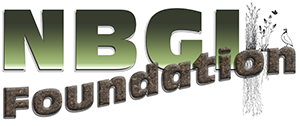HARRISBURG, Pa., June 29, 2011 /PRNewswire-USNewswire/ — The Pennsylvania Game Commission is seeking public input on a draft northern bobwhite quail management plan, which can be reviewed on the agency’s website (www.pgc.state.pa.us) by clicking on the “Draft Quail Management Plan” icon under the large photo in the center of the homepage.
Public comments on the agency’s quail management plan will be accepted until Sept. 1, via the website or by mail to: Quail Management Plan, Pennsylvania Game Commission, 2001 Elmerton Avenue, Harrisburg, PA 17110-9797.
“We are seeking public comment on this draft bobwhite quail management plan to ensure the resulting final management plan considers the thoughts and concerns of Pennsylvanians about this species,” said Calvin W. DuBrock, Game Commission Bureau of Wildlife Management director. “As written, the plan is science-based, progressive and promotes responsible management of bobwhite quail. We’re interested in hearing from Pennsylvanians who would like to offer comments, and to see if we’ve missed something or if they share our management vision for the future.”
The mission of the bobwhite quail management plan is to maintain and restore wild breeding populations of northern bobwhite quail in suitable habitats.
“Drafted by staff of the agency’s Game Bird Section, this plan will require the support of Pennsylvania hunters and all Pennsylvanians,” DuBrock said. “Most importantly, it will require working with farmers, private landowners, and public landowners, the U.S. Department of Agriculture, Pheasants Forever, Quail Forever and other conservation partners to restore farmland ecosystems to accommodate bobwhites.”
The plan identifies supporting goals, objectives and strategies for guiding restoration and management decisions over a 10-year horizon, 2011-2020. This plan provides a comprehensive look at the bobwhite quail in Pennsylvania. Information on taxonomy, biology, habitat relationships, population and habitat trends, propagation, hunting, restoration and partnerships are discussed in detail. The most important part of this plan outlines the management goals, objectives and strategies and a proposed implementation schedule.
For the complete story, click HERE.






